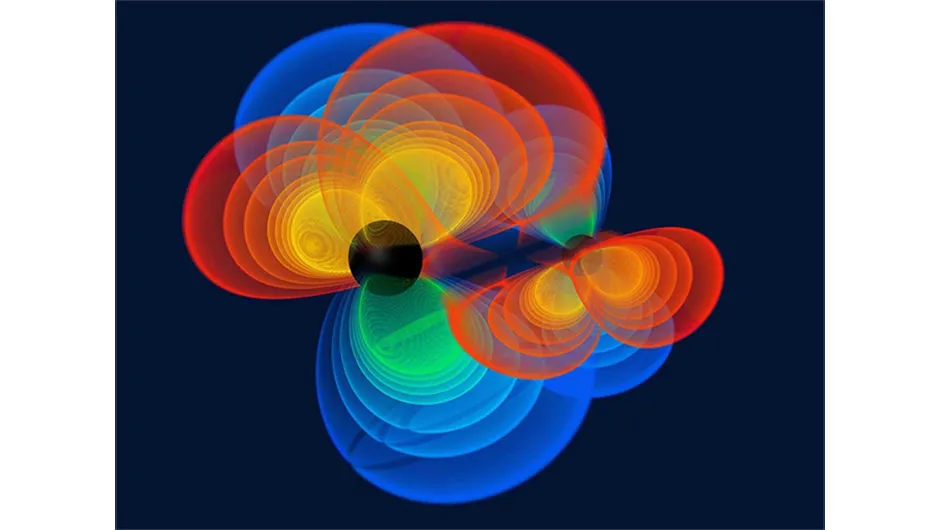An artist's impression of two binary black holes in orbit around each other. Credit: The SXS (Simulating eXtreme Spacetimes)
Scientists behind the Laser Interferometer Gravitational-Wave Observatory (LIGO) have announced the first ever detection of a gravitational wave signal.
The news is being described as a major scientific discovery, as well as ushering in a new era of astronomy.
The LIGO team managed to observe a warping of space-time caused by the merging of two black holes.
LIGO is the world’s largest gravitational wave observatory and consists of two massive laser interferometers positioned thousands of kilometres apart.
It examines the physical properties of light and space to detect and analyse the origins of gravitational waves.

The signal behind the discovery was detected on 14 September 2015 and is named GW150914.
It is seen as proof that Einstein’s theory of general relativity was correct, as well as proof of the existence of black holes of greater than 25 solar masses.
The discovery also reveals direct evidence that two black holes can exist as a binary system.
Gravitational waves are ripples in space-time caused by massive, violent events, such as the black hole collision detected by LIGO, and were first presented as a theory by Albert Einstein in 1915.
The theory explains how massive bodies produce fluctuations in the fabric of space-time.
These fluctuations are called gravitational waves.
The waves carry information about the origins of the Universe and this discovery will eventually reveal new insights into the evolution of stars, supernovae, gamma-ray bursts, neutron stars and black holes.
ESA has already positioned a spacecraft in orbit this year that will search for gravitational waves in space, called LISA Pathfinder.
“With LISA Pathfinder, we will be testing the underlying technology to observe gravitational waves from space, and it is even more encouraging to know that these long-mysterious fluctuations have now been directly detected,” says Paul McNamara, LISA Pathfinder project scientist
“This is a monumental leap forward for physics and astrophysics -- taking Einstein’s predictions and turning them into an entirely new way to sense some of the most fascinating objects in our Universe,” says Professor Sheila Rowan, Director of the University of Glasgow’s Institute for Gravitational Research and a member of the team behind the discovery.
“Our observation of gravitational waves accomplishes an ambitious goal set out over five decades ago to directly detect this elusive phenomenon and better understand the Universe, and, fittingly, fulfills Einstein’s legacy on the 100th anniversary of his general theory of relativity,” says Caltech’s David H. Reitze, executive director of the LIGO Laboratory.
